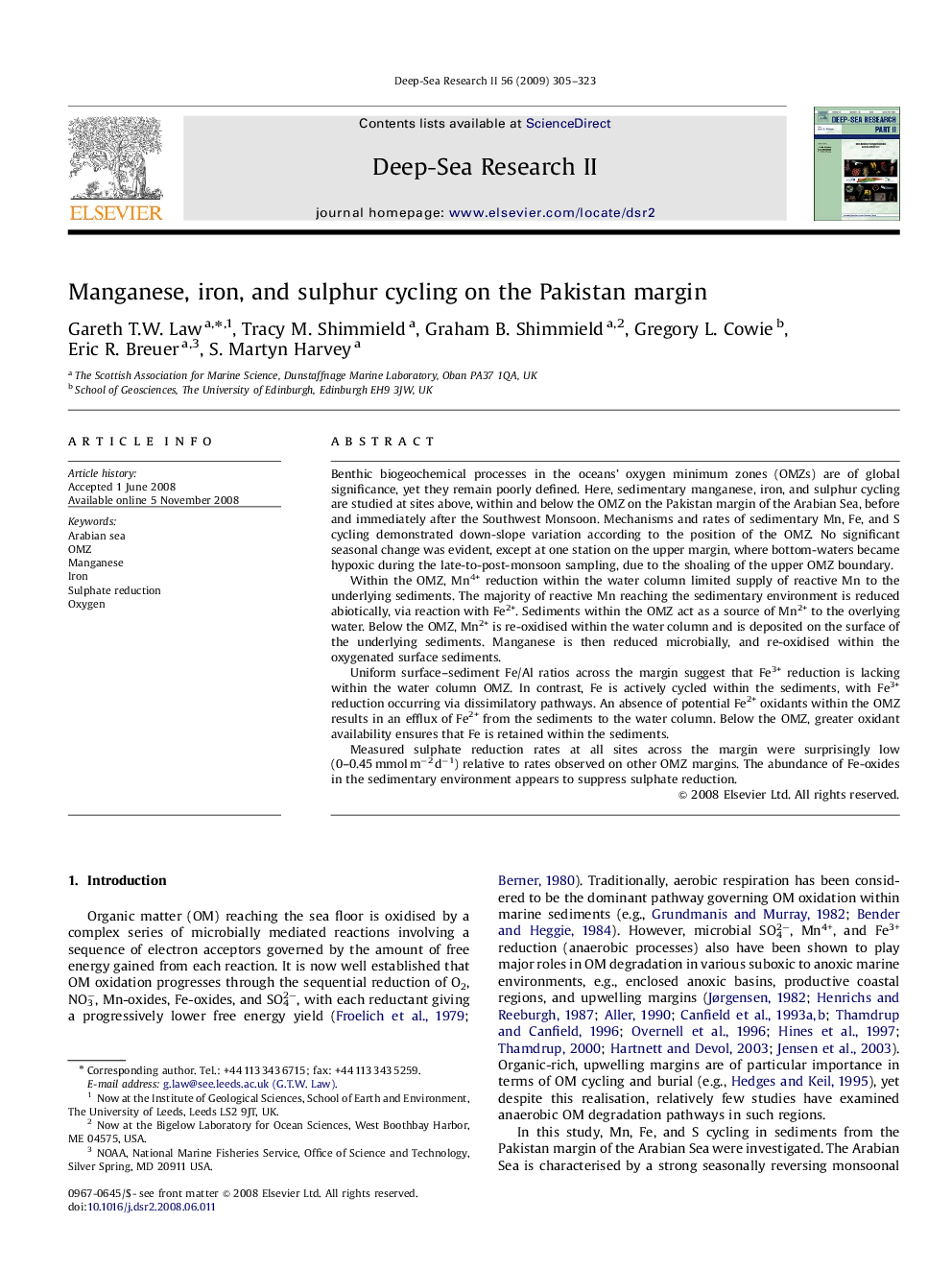| کد مقاله | کد نشریه | سال انتشار | مقاله انگلیسی | نسخه تمام متن |
|---|---|---|---|---|
| 4537925 | 1626486 | 2009 | 19 صفحه PDF | دانلود رایگان |

Benthic biogeochemical processes in the oceans’ oxygen minimum zones (OMZs) are of global significance, yet they remain poorly defined. Here, sedimentary manganese, iron, and sulphur cycling are studied at sites above, within and below the OMZ on the Pakistan margin of the Arabian Sea, before and immediately after the Southwest Monsoon. Mechanisms and rates of sedimentary Mn, Fe, and S cycling demonstrated down-slope variation according to the position of the OMZ. No significant seasonal change was evident, except at one station on the upper margin, where bottom-waters became hypoxic during the late-to-post-monsoon sampling, due to the shoaling of the upper OMZ boundary.Within the OMZ, Mn4+ reduction within the water column limited supply of reactive Mn to the underlying sediments. The majority of reactive Mn reaching the sedimentary environment is reduced abiotically, via reaction with Fe2+. Sediments within the OMZ act as a source of Mn2+ to the overlying water. Below the OMZ, Mn2+ is re-oxidised within the water column and is deposited on the surface of the underlying sediments. Manganese is then reduced microbially, and re-oxidised within the oxygenated surface sediments.Uniform surface–sediment Fe/Al ratios across the margin suggest that Fe3+ reduction is lacking within the water column OMZ. In contrast, Fe is actively cycled within the sediments, with Fe3+ reduction occurring via dissimilatory pathways. An absence of potential Fe2+ oxidants within the OMZ results in an efflux of Fe2+ from the sediments to the water column. Below the OMZ, greater oxidant availability ensures that Fe is retained within the sediments.Measured sulphate reduction rates at all sites across the margin were surprisingly low (0–0.45 mmol m−2 d−1) relative to rates observed on other OMZ margins. The abundance of Fe-oxides in the sedimentary environment appears to suppress sulphate reduction.
Journal: Deep Sea Research Part II: Topical Studies in Oceanography - Volume 56, Issues 6–7, March 2009, Pages 305–323